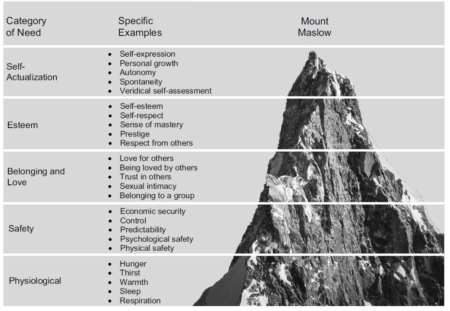I have been really busy with life, and work, and lots of other things, so it has been over a year since I have posted! I thought I would share a fun active learning exercise that I do with my family development students related to intimate relationships. Thanks to Kale Monk for some of the inspiration behind this two-part activity.
One thing I want to teach my students is to keep their expectations for their partners in check. One person cannot be our best friend, best lover, biggest source of perfect social support, accountability partner for our goals, etcetera. That is too much pressure to put on any one person! To make this point, I have my students do two in-class activities (on different days) that I tie together. Note I do these activities with a freshman/sophomore level gen-ed class of about 55 students (and I have an online version that I use for an online class of about 200 students).
Class 1: The Perfect Partner
On the first day, in a module of the course called “love and romantic relationships” I have them do a supplemental reading from Aziz Ansari’s book Modern Romance. Here is a quote from the chapter called Choices and Options:
“. . . we live in a culture that tells us we want and deserve the best, and now we have the technology to get it. Think about the overwhelming popularity of websites that are dedicated to our pursuit of the best things available. Yelp for restaurants. TripAdvisor for travel. Rotten Tomatoes and Metacritic for movies. A few decades ago, if I wanted to research vanilla ice cream, what would I have even done? Cold-approach chubby guys and then slowly steer the convo toward ice cream to get their take? No, thanks. Nowadays the Internet is my chubby friend. It is the whole world’s chubby friend. If this mentality has so pervaded our decision making, then it stands to reason that it is also affecting our search for a romantic partner, especially if it’s going to be long-term.”
Ansari, Aziz; Klinenberg, Eric. Modern Romance (Kindle Locations 1521-1528). Penguin Publishing Group. Kindle Edition.

After having an in-class discussion about an assignment related to the chapter, I have them consider how much time they spend researching a purchase or where to go to dinner. Then, I ask “Do we take this “best of” mentality into our relationships?”
Next, I have them take five minutes to write down the characteristics of their perfect partners. Then, in small groups, I have them grab a large post-it note or use one of the freestanding dry erase boards in my classroom and some markers, and, in a small group, “Discuss your perfect partner with your group – what were the commonalities in what you were looking for? Write the commonalities on your large post-it note.” The list is always really extensive. I also ask them to take a picture of their post-it note and post it to their “group” page in Canvas. They could also just save it on their phone for next week.
After this is completed, I ask them “Would it be possible to design the perfect partner???” I show them a youtube preview of the movie Her and we watch the first part of this Mostly Human with Laurie Segall show about a woman who is in love with a robot.
 They then return to their post-it notes and discuss with their groups and consider whether or not a robot could meet these criteria, and would they want to be with a robot. They overwhelmingly say no. Then I ask them to consider “If you could tweak your partner to be more or less perfect, would you? Why or why not?” We then end with a larger discussion.
They then return to their post-it notes and discuss with their groups and consider whether or not a robot could meet these criteria, and would they want to be with a robot. They overwhelmingly say no. Then I ask them to consider “If you could tweak your partner to be more or less perfect, would you? Why or why not?” We then end with a larger discussion.
Class 2: The Suffocation of Marriage
A few classes later, in a module called Marriage and Cohabitation, I cover the suffocation of marriage model after they have read the article The Suffocation Model: Why Marriage in America Is Becoming an All-or-Nothing Institution by Eli Finkel and colleagues. Then, I have them revisit their “perfect partner” poster using the picture they took. On one side of a large post-it note, I have them list some of the characteristics that their group originally listed they wanted in a “perfect partner” from the previous class. On the other side, I have them list whether the characteristic meets a self-actualization, esteem, belonging and love, safety, or physiological need using the diagram from the manuscript. Then I have them tally up how many characteristics fall in each category. Self-actualization and esteem usually have the most votes, very few list any characteristics related to physiological need and safety. We then discuss who realistic the list is.
I then use a quote from Eli Finkel on the importance of diversified social portfolios from this Atlantic article to get into discussing the importance of having friends and a support system outside of our partners.

“There’s a cool study by Elaine Cheung at Northwestern University, where she looked at the extent to which people look to a very small number of people to help them manage their emotions versus an array of different people, to manage different sorts of emotions. So, one person for cheering up sadness, another person for celebrating happiness, and so forth.
It turns out that people who have more diversified social portfolios, that is, a larger number of people that they go to for different sorts of emotions, those people tend to have overall higher-quality life. This is one of the arguments in favor of thinking seriously about looking to other people to help us, or asking less of this one partner.
I think most of us will be kind of shocked by how many expectations and needs we’ve piled on top of this one relationship. I’m not saying that people need to lower their expectations, but it is probably a bad plan to throw all of these expectations on the one relationship and then try to do it on the cheap. That is, to treat time with your spouse as something you try to fit in after you’ve attended to the kids, and after you’ve just finished this one last thing for work. Real, attentive time for our spouse is something that we often don’t schedule, or we schedule insufficient time for it.”
I discuss how I love having my squad of awesome women who support me and tell some stories. I think this is effective because I also talk a lot about how awesome my husband Aaron is all semester, so it is good for them to hear that even though Aaron is one of the best spouses in the universe, he is not the only person I go to for social support.
I then have them consider/discuss the following:
1.After reading this, look back at the suffocation model. On a piece of paper, write down who fulfills your needs in each of the areas: 1) self-actualization, 2) esteem, 3) belonging and love, 4) safety, 5) physiological
2.Do you have a diversified social portfolio?
3.Discuss your portfolios with your group. Do you need to diversify? Do imagine it would change in the future? What can you do to keep it diversified?
That’s it! I also do this with my online students, and they have their discussions in small online groups after consuming the material.
I love these class periods and the students find them very compelling as well. Try it in your classroom, and let me know what how it goes! Feel free to send me an email for any of the materials related to this post (i.e. prompts/assignments/power points).